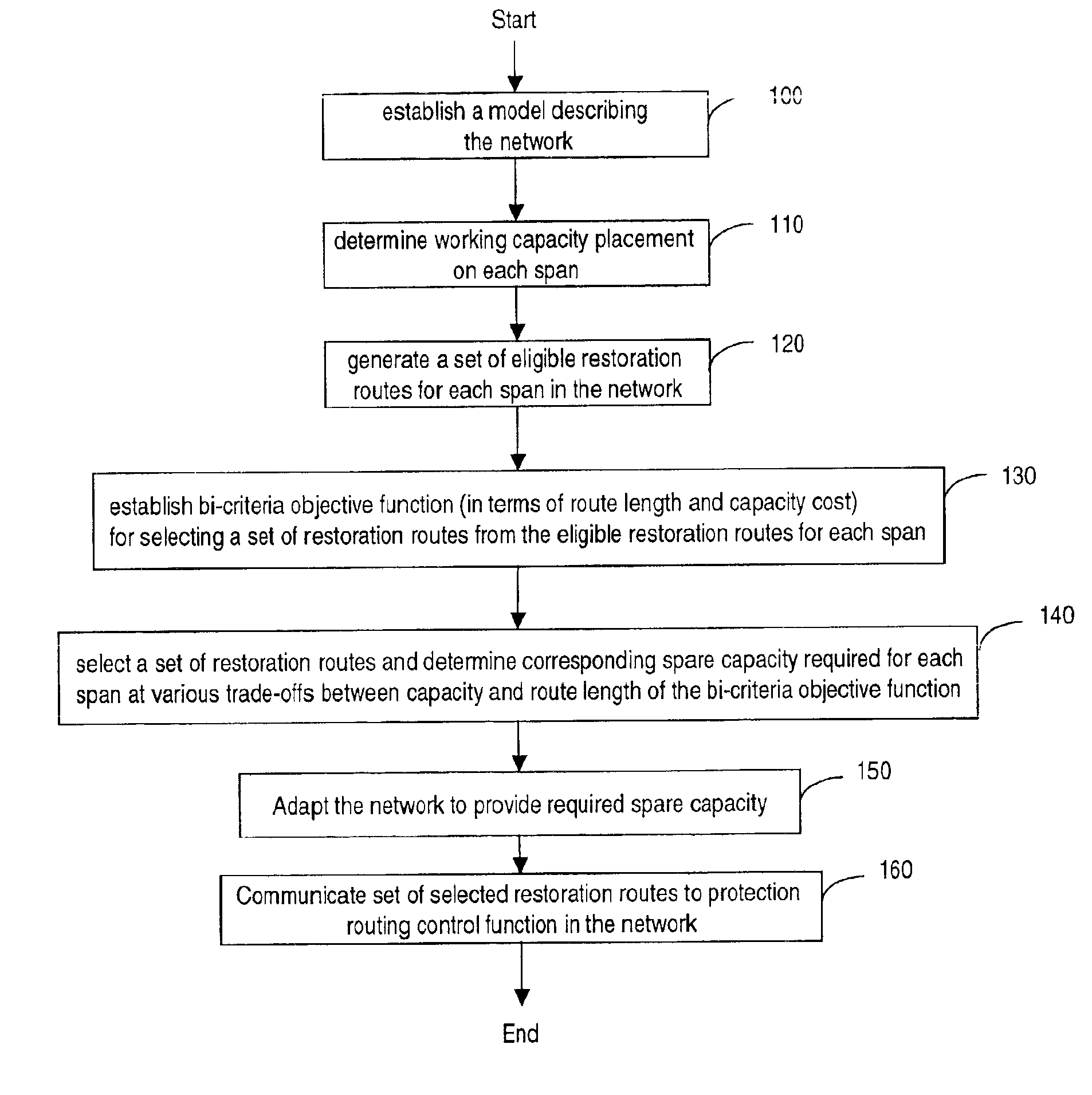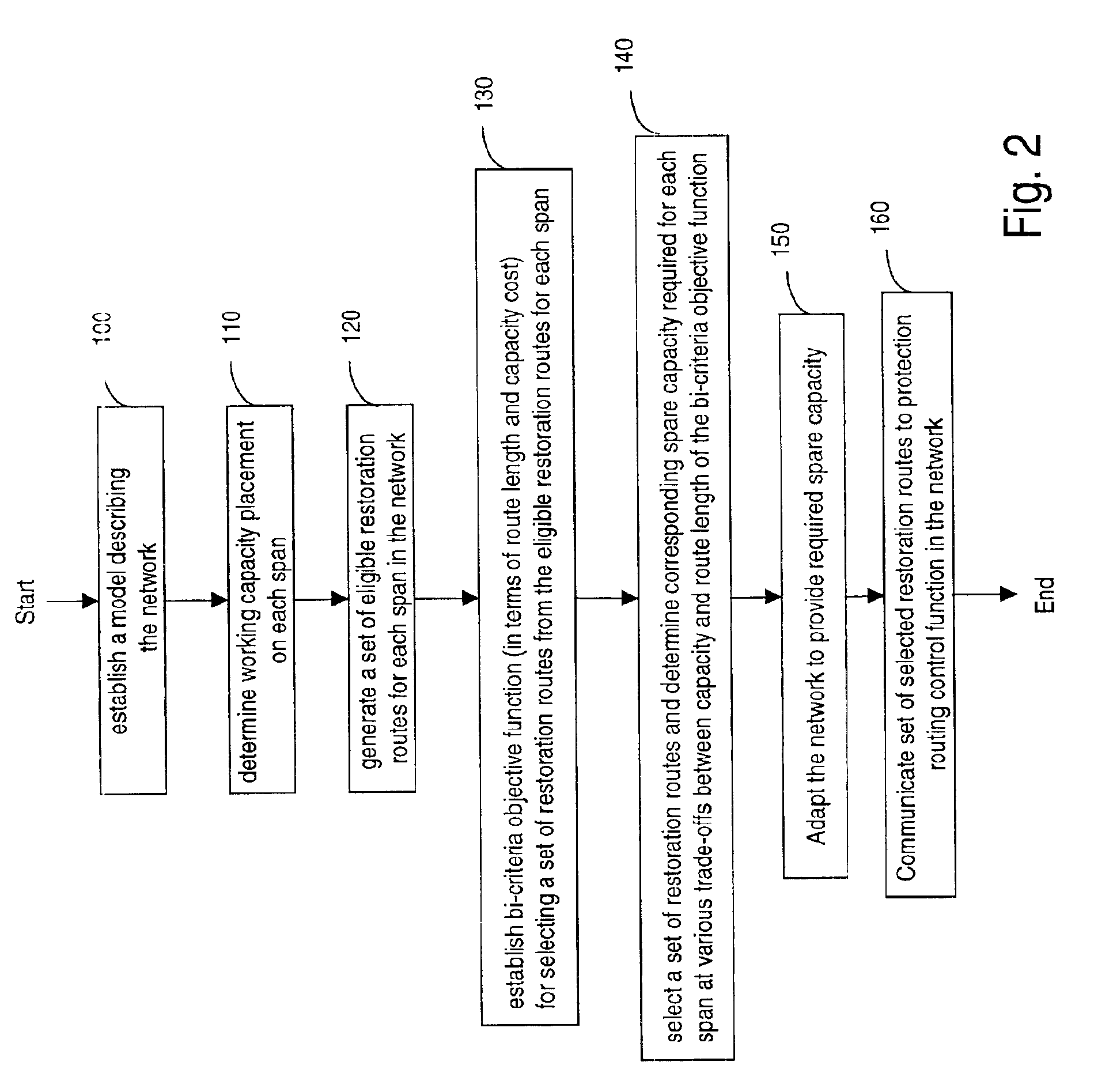Method of providing restoration routes in a mesh network
a mesh network and restoration route technology, applied in the field of protecting traffic in the mesh network, can solve the problems of affecting the flow of traffic from source to destination node, service degradation, failure, etc., and achieve the effect of capacity cos
- Summary
- Abstract
- Description
- Claims
- Application Information
AI Technical Summary
Benefits of technology
Problems solved by technology
Method used
Image
Examples
Embodiment Construction
Referring to FIG. 1, an example mesh network 2 will be described. This mesh network 2 could represent a long haul dense wavelength division multiplexed (DWDM) optical network for example. The mesh network 2 consists of twenty nodes, labelled N1 to N20, and twenty-eight spans, labelled S1 to S28, interconnecting the nodes according to Table 1, below. Table 1 lists, for each span: the two nodes which the span interconnects, the length of the span, the cost of the span, the working capacity of the span, and the spare capacity required of the span determined in accordance with an embodiment of the invention when alpha (an intermediary variable of the bi-criteria objective function) equals 200. The total capacity of a particular span equals the working capacity plus the spare capacity of that span. The network nodes could be WDM optical cross connect (OXC) network nodes, for example, and the spans could be DWDM links carried on standard single mode optical fiber (SSMF). In FIG. 1, a fail...
PUM
 Login to View More
Login to View More Abstract
Description
Claims
Application Information
 Login to View More
Login to View More - R&D
- Intellectual Property
- Life Sciences
- Materials
- Tech Scout
- Unparalleled Data Quality
- Higher Quality Content
- 60% Fewer Hallucinations
Browse by: Latest US Patents, China's latest patents, Technical Efficacy Thesaurus, Application Domain, Technology Topic, Popular Technical Reports.
© 2025 PatSnap. All rights reserved.Legal|Privacy policy|Modern Slavery Act Transparency Statement|Sitemap|About US| Contact US: help@patsnap.com



